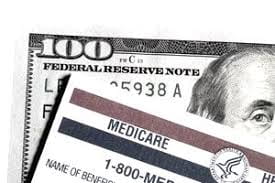Written by Jordan Leith, BS, Chemical & Biomolecular Engineering, University of Tennessee-Knoxville & participant in the 2019 Institute for Public Health Summer Research Program
When we utilize the interface between medicine and public health, we are drawn towards inequalities because they provide the unique opportunity to maximize wellness at both the individual and community level. However, we are often drawn to physical manifestations of inequality: a disproportionate burden of kidney disease within a community or infectious diseases that spread rapidly in vulnerable populations. This laser focus can blind us to the multitude of systemic causes that result in these inequalities. Luckily, there are researchers like Dr. Karen Joynt Maddox to open our eyes and eloquently pinpoint where these systems can be strengthened.
The U.S. government provides health insurance for designated individuals through two different programs. The first, Medicare, is a federal insurance program designed for elderly adults and individuals living with disabilities. Medicaid, on the other hand, is a state-administered insurance program meant to serve eligible low-income adults, pregnant women, and children. These two programs are not mutually exclusive. Individuals receiving coverage from both are called “Dual-enrollees” or “Duals” for short. At this point you’re probably asking, “Ok, so what? Don’t these programs inherently address inequality?” The answer is yes… kind of. These programs were meant to reduce the financial burden of health costs on vulnerable populations. With respect to equity, this is a step in the right direction; however, it lacks context. To gain this context we must examine how health systems are reimbursed.
Hospitals that receive payments from Medicare participate in the Hospital Readmissions Reduction Program (HRRP) which aims to enhance the quality to cost ratio of healthcare using readmission to hospitals as the primary metric. For example, hospitals with low readmissions of Medicare enrollees will receive 100% of the cost of charged services. Hospitals with high readmission rates of Medicare enrollees will receive a fraction, perhaps 80%, of the cost of charged services. Thus, hospitals with high readmission rates have an incentive to provide high quality care: to reduce readmission rate allowing them to receive 100% of the cost of charged services. In a perfect world where patient populations are uniform, this program seems reasonable. The truth is we don’t live in a perfect world. It has been demonstrated that dual-enrollees have a higher risk of being readmitted due to the complexity of their conditions and social factors. This means health systems that treat more dual enrollees are more likely to be penalized. Thus, Medicare and Medicaid programs designed to aid vulnerable populations, also penalize providers who treat vulnerable populations.
So where do we go from here? The direct answer is to write new regulations for Medicare and Medicaid implementation, but I think the call to action is more nuanced. I think this demonstrates that no health system is perfect or equitable. But as researchers, physicians, and public health analysts, it is our responsibility to optimize these health systems through our work on behalf of vulnerable populations in the never ending pursuit of equality.
